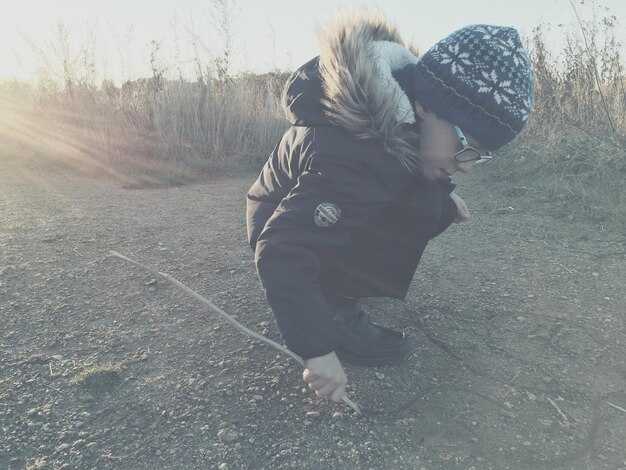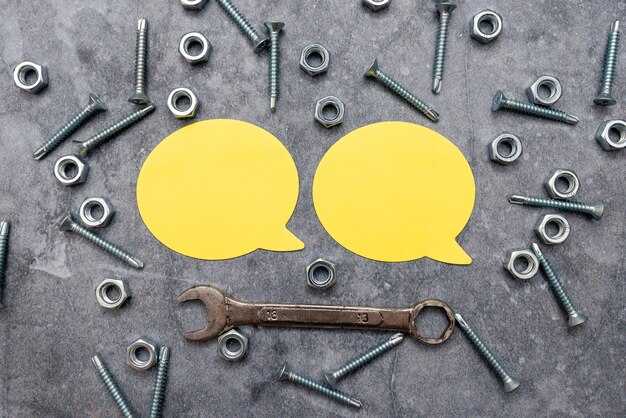Avoidant partners can wound the psyche in deep and lasting ways — and often they do so without even realizing the harm they cause. It’s rarely a single dramatic betrayal that destroys you; it’s the accumulation of countless small slights: quiet, persistent patterns that erode your sense of worth, your emotional safety, and your capacity to trust. You feel the sting when they withdraw just as you ache for closeness. They minimize your reactions — calling you too sensitive, too needy, overreacting — until you begin to doubt your own feelings. The longer you remain, the easier it becomes to wonder if they might be right. But this is not a sign that you’re losing your mind. What you’re experiencing is not love. It’s emotional neglect expressed through silence, avoidance, and denial, and its consequences are invisible yet devastating. It rewires your nervous system, chips away at your confidence, and leaves you chasing sparse moments of affection as if your survival depended on them. This account exposes how avoidant attachment damages you, why it keeps people trapped in the same painful loop, and, most importantly, how recovery can begin. If you have loved someone who is avoidant, you have likely questioned yourself more times than you can count: waiting by the phone for a reply, being the one to reach out first, offering apologies when you hadn’t wronged them, forgiving without ever hearing “I’m sorry.” Gradually, you learn to silence your needs. You stop seeking reassurance, shrink your feelings, soften your demands, and quiet your voice because every attempt to speak your truth is greeted with dismissal — eye-rolls, accusations that you’re exaggerating, or emotional retreat. Then the questions creep in: “Am I too much? Am I broken?” The reality is this: your reactions are normal responses to emotional neglect. Emotionally healthy, securely attached people would recognize what you have endured as painful and unacceptable. Avoidant partners seldom unleash overt cruelty; their harm is sly and subtle, which is precisely what makes it so corrosive. It’s being met with silence when you need comfort, dismissal when you need validation, and withdrawal when you reach for connection. Because these behaviors are not flagrantly abusive, you rationalize them — convincing yourself they’re merely stressed, busy, or simply bad at showing love — and you cling to the rare times they lower their guard because those crumbs of affection feel like proof that real love might exist. Yet those crumbs never suffice. The confusion, self-doubt, and exhaustion you feel are not signs of personal weakness; they are what happens when your nervous system stays stuck in survival mode while you try to predict the reactions of someone who keeps you at arm’s length. You are not asking for too much. You are asking for the basic human connection that everyone deserves: love, validation, and reliability. The true harm of an avoidant relationship rarely arrives in one explosive confrontation. It accumulates through repeated, subtle behaviors that leave invisible wounds on heart and mind — wounds that can be as devastating as any overt abuse. The first of these invisible injuries is emotional invalidation: when you reveal sadness or a desire for closeness, your feelings are minimized or dismissed, teaching you to distrust your own emotional responses. The second is withdrawal: avoidant partners often shut down emotionally just when you are most vulnerable — changing the subject, becoming unresponsive, or physically leaving — so the very moment you seek safety becomes the moment they retreat. Another wound comes from blame-shifting: when confronted about their distance, they deflect responsibility by accusing you of being too demanding or overly emotional, making you internalize guilt and believe their withdrawal is your fault. One of the most destructive patterns is intermittent reinforcement: sporadic displays of affection are enough to keep hope alive, but the unpredictability trains the brain into craving those rare moments and tolerating prolonged neglect — a mechanism similar to what drives gambling addiction. This creates trauma bonding: the relief and joy felt during the occasional emotionally present phase become chemically tied to the same person who causes the pain, turning their presence into both the wound and the temporary balm and making it harder to leave. Over time, this conditioning fosters hypervigilance: constant monitoring of moods, obsessing over tone and texts, and exhausting attempts to predict whether warmth or coldness will show up that day. These invisible wounds don’t bruise the skin but they scar the nervous system, your identity, and your ability to trust. Because the harm is gradual and subtle, you may not perceive its full scope until you feel utterly lost in the relationship. The most painful aspect is how the damage slowly accumulates: confidence wanes, safety evaporates, and your belief in being lovable erodes. Early on you might excuse it — “They’re tired,” “They’re stressed” — but weeks and months reveal a pattern: withdrawal whenever closeness appears, dismissal of your vulnerability, blame when you voice needs. Before long, you are no longer the person you were at the start. This cumulative trauma is not a single betrayal but thousands of tiny invalidations, disappointments, and retreats that compound until you barely recognize yourself. You begin to shrink: you stop asking for what you need, tiptoe around moods, and prioritize keeping the peace over expressing your truth. Worse, you internalize this as normal: crumbs become “love,” inconsistency is mistaken for intensity, and you start believing that relationships are supposed to feel this way. That confusion itself is part of the trauma. On a bodily level, this cycle locks the nervous system into hypervigilance, priming the brain to expect abandonment so that even when someone reliable appears, your body cannot immediately accept safety. Identity erosion is another consequence: after long stretches of accommodating someone’s discomfort with intimacy, you lose sight of what once made you laugh, what you wanted, and who you were outside the relationship. Perhaps the cruelest twist is that avoidant partners seldom own their patterns, leaving you to shoulder the blame: “If I were calmer, less needy, less emotional, maybe they’d love me.” That self-blame gnaws away at you, convincing you that you are the broken one. This is how cumulative trauma operates: quiet, relentless, and deepening the longer it goes unchecked. That is why you feel stuck and why no matter what you do, it often seems never enough. And recognizing this pattern is the first prerequisite for escape. The hurt does not end with arguments or even with the relationship itself; these dynamics leave long-term psychological fingerprints across your life. One of the earliest lasting effects is chronic self-doubt. When someone persistently tells you that your needs are excessive or your emotions invalid, you internalize that message and second-guess yourself in relationships, at work, in friendships, and in life decisions. Another consequence is emotional numbness: after repeatedly reaching out and being dismissed, the nervous system learns to protect itself by shutting down feeling — dampening tears, joy, and desire — which removes vitality and a sense of being fully alive. Then there’s relationship anxiety: after leaving an avoidant partner, many carry the belief that closeness equals peril, so when a genuinely available person shows up they may respond suspiciously or pull away instead of allowing trust to form. Identity diffusion can follow: bending and muting the self to accommodate someone else can leave a person unsure of what they like, want, or who they are outside that dynamic; rebuilding that sense of self can take a long time. Distorted standards for love often emerge as well: accepting minimum effort or intermittent attention becomes normalized, and standards drop to the point of settling for relationships that fail to provide safety, consistency, and intimacy. These consequences ripple outward, affecting friendships, family ties, and professional life — habits of hypervigilance, self-blame, and emotional suppression making authentic connection difficult everywhere. Yet these outcomes are not evidence of a broken person; they are signs of survival — markers of what was endured during prolonged emotional starvation — and because the brain and body were trained into these patterns, they can be retrained. Healing is possible, but it starts with acknowledging the wounds and understanding that they were not born from a lack of inherent worth. One of the hardest aspects of this dynamic is its invisibility: there are often no dramatic scars or explosive fights to point to, only the cumulative toll of tiny hurts that are easy to rationalize and hard to explain to others. That invisibility is what keeps many trapped for years. Chronic self-doubt arises when emotions are repeatedly dismissed, teaching you to mistrust your inner experience. Emotional suppression follows when vulnerability is met with withdrawal or contempt, so you stop expressing sorrow, fear, or need because past attempts were unmet. Hypervigilance takes hold as you learn to scan and anticipate the avoidant partner’s mood, which keeps the nervous system tense and robs you of peace. Distorted self-image can become entrenched when responsibility is shifted onto you, convincing you that wanting connection, reassurance, or intimacy is a personal defect rather than a normal human need. That quiet cruelty leaves people feeling invisible, unworthy, or broken even though no single overt act can be labeled “the moment” of harm. Hear this clearly: you are not crazy, not too sensitive, not fundamentally broken. What you are feeling is a natural reaction to chronic emotional neglect, and emotionally healthy people would acknowledge these behaviors as damaging. The first healing step is naming the injury: saying out loud, “This was emotional neglect; I was invalidated and starved of consistent love.” Putting those words to the experience interrupts self-blame and restores the recognition that human needs are not flaws. Next is reconnecting with yourself: after long periods of suppressing feeling, it’s essential to relearn how to attend to your emotional life. Journaling, therapy, or quiet reflection — asking “What do I feel right now? What do I need?” — are practices that rebuild emotional awareness like a muscle. The third step is establishing boundaries: these are not tools for controlling others but for safeguarding your well-being. Decide what behaviors you will accept and what you will not tolerate — for example, refusing to invest in someone who continually dismisses your feelings — and enforce those limits so others learn that your needs matter. The fourth step is seeking relationships with emotionally available people: make conscious choices about whom to invest in and look for consistency, emotional openness, empathy, and reliability. Surrounding yourself with such people helps rewire expectations toward healthy love. The fifth step is getting support from professionals and community: healing attachment wounds is deep work, and therapists, support groups, or trusted mentors can walk alongside you; receiving steady, safe support is itself part of the recovery. Finally, rebuild your standards for love: you have every right to expect to be seen, heard, and valued; to ask for consistency, safety, and affection; and to refuse crumbs when you deserve the full meal. Raising those standards signals to yourself that you are worthy of real love. This roadmap — naming the harm, reconnecting with yourself, setting and holding boundaries, choosing emotionally available people, seeking supportive help, and restoring your standards — does not produce overnight results, but each step moves you further from the fog of avoidance and closer to genuine connection. You are not excessive. You are in the process of healing. Each action you take proves that your needs are not burdens but the basis for authentic intimacy. This is the turning point: you have carried the damage long enough, recognized the invisible wounds, and seen the long-term effects. Now you get to choose whether this will define you or transform you. What you experienced was not love; it was survival behavior: shrinking yourself, chasing fragments of attention, learning to endure. That painful adaptation, however, also reveals strengths — your capacity to love, your persistence, your resilience — qualities that can now propel your recovery. The shift begins when the question changes from “Why wasn’t I enough for them?” to “Why did I abandon myself to keep them?” That question isn’t about blame but about awakening; it redirects focus from the avoidant partner (which cannot be controlled) back to reclaiming your worth (which you can). Growth means no longer measuring your value by someone else’s withholding, no longer waiting for validation from the person who fails to provide it, and rejecting the idea that love must feel anxious. Instead, anchor yourself to a new truth: love should feel safe, steady, and mutual. There is power in using past pain for growth: turn hypervigilance into self-awareness, overgiving into self-compassion, and longing for intimacy into courage to seek relationships that actually nourish you. Reclaim the story: what happened to you does not define you, and the avoidant partner does not get the final say. Decide what lesson to take from this, what new standard you will set for love, and who you will become because of it. When damage is reframed as wisdom, you stop carrying the past as an open wound and begin carrying it as a source of learning. You cease seeing yourself as a victim of someone else’s avoidance and instead become the architect of your own healing. Once it is clear that you were never too much — you were simply with someone who gave too little — settling ends. From that point forward you can construct a life and relationships that reflect your true worth. In short: avoidant partners can leave deep damage not because you were unlovable, but because they were unable to offer steady, safe, emotionally present love — and that is not your fault. You are not too sensitive or overly needy; you are human and wired for connection. You deserve a relationship where feelings are acknowledged, needs are respected, and love is reciprocated with comparable depth. If nothing else resonates, take this truth: you deserve love that does not require abandoning yourself. You need not keep shrinking, proving, or chasing to be chosen — you are already enough. This moment can mark the start of healing: recognize the wounds, set new standards, and choose people who show up consistently and openly. That choice is yours and it will change your life. If these words landed for you — made you feel seen, validated, or relieved to finally have language for your experience — consider staying connected to a community where honest conversations about love, healing, and self-worth happen regularly. You don’t have to do this work alone, and the next step toward recovery might begin with the very next resource you reach for.



 How Avoidants Silently Destroy Their Partners in Relationships | Avoidant attachment style">
How Avoidants Silently Destroy Their Partners in Relationships | Avoidant attachment style">

 The longer you stay silent with your avoidant Ex, this will happen | Jordan Peterson">
The longer you stay silent with your avoidant Ex, this will happen | Jordan Peterson">
 Unhealed Trauma & Poor Boundaries Make Finding The ONE Feel Impossible">
Unhealed Trauma & Poor Boundaries Make Finding The ONE Feel Impossible">
 Simple 4 Step Apology to Repair Conflicts and Disconnection">
Simple 4 Step Apology to Repair Conflicts and Disconnection">
 Here’s WHEN we can BLAME the Narcissist.">
Here’s WHEN we can BLAME the Narcissist.">
 Why “Just Going with the Flow” Falls Short of Giving Meaning">
Why “Just Going with the Flow” Falls Short of Giving Meaning">
 Self Centered Relationships NEVER thrive.">
Self Centered Relationships NEVER thrive.">
 TOP 5 SIGNS an Avoidant STILL LOVES YOU But Is TOO SCARED to Say It | Mel Robbins Motivation Speech">
TOP 5 SIGNS an Avoidant STILL LOVES YOU But Is TOO SCARED to Say It | Mel Robbins Motivation Speech">
 Avoidant Ex Regret Timeline: The Moment It Finally Hits">
Avoidant Ex Regret Timeline: The Moment It Finally Hits">
 The Abusers Are Gone, But The Hurt Still Needs Healing">
The Abusers Are Gone, But The Hurt Still Needs Healing">
 Paralyzed by the #1 Fear: Breaking Free from Speaking Up in Groups">
Paralyzed by the #1 Fear: Breaking Free from Speaking Up in Groups">